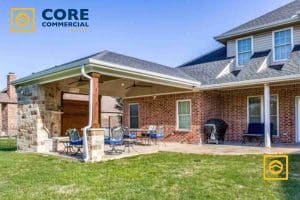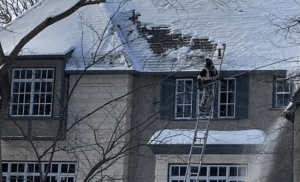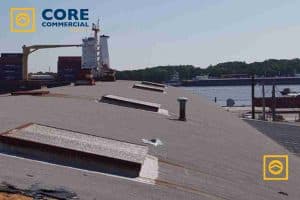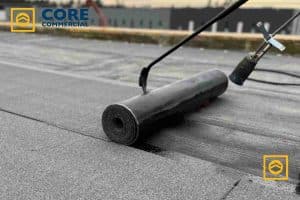After a major storm passes through Lubbock, your roof may look fine from the street, but hidden damage is often lurking out of sight. High winds, pounding hail, and heavy rain can cause serious roofing issues that don’t show up until water starts dripping through your ceiling. That’s why getting a roof inspection right after a storm isn’t just a good idea, it’s the smartest way to protect your home.
Our favorite part of the inspection process is the attic and interior check, where signs of water intrusion, mold, or even light peeking through can reveal problems that aren’t visible on the surface. Catching these early saves homeowners from much bigger headaches down the line.
This article explains what happens during a post-storm roof inspection, what to expect from a professional, and how it can save you money and stress. If you’ve recently experienced stormy weather, keep reading. You’ll want to know this before small issues turn into expensive surprises.
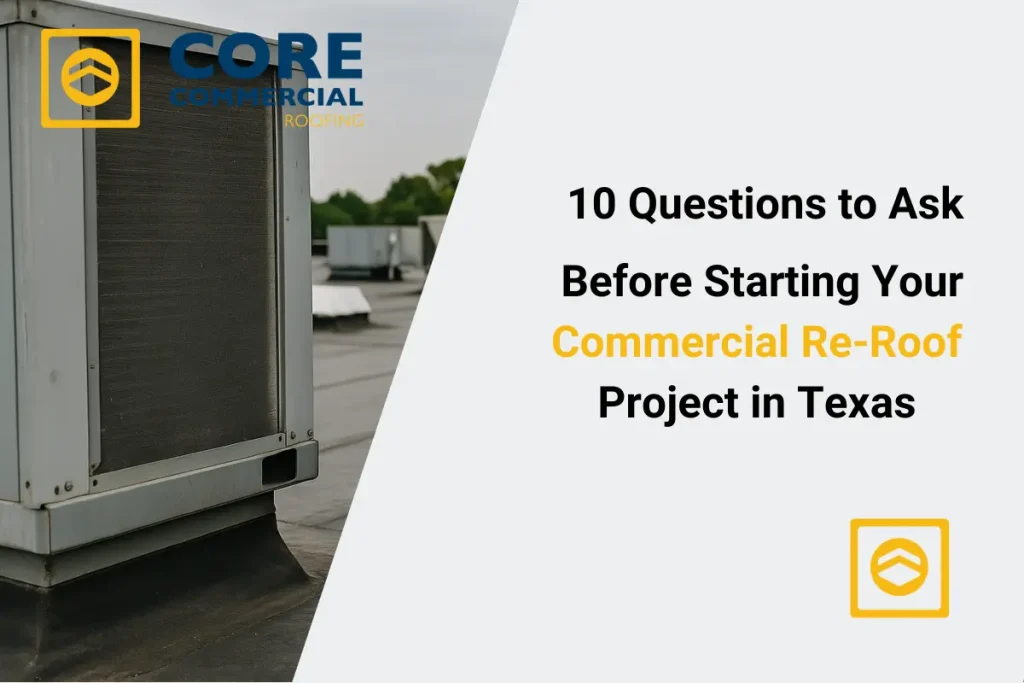
Table of Contents
Lubbock’s Storm Season (March–June)
Each year, West Texas sees its most intense severe-weather outbreaks between March and June, peaking in April and May when warm Gulf moisture clashes with dry Plains air. It’s during these months that hail-sized golf balls and straight-line winds are most likely to batter your roof and why having an inspector on standby can save you thousands.
Why Post-Storm Roof Inspections Matter
Storms in Lubbock can be intense, but just because your roof stayed in place doesn’t mean it’s damage-free. Many roofing issues caused by wind or hail are hard to notice from the ground. Tiny cracks, lifted shingles, or bruised materials might not leak right away, but they will eventually.
Post-storm inspections help catch:
- Water entry points before they become indoor leaks
- Shingles that are loose, cracked, or missing
- Damaged flashing and seals around pipes or chimneys
- Early signs of rot, mold, or insulation damage
Roof inspections after a storm offer peace of mind. More importantly, they help prevent issues from snowballing into major repairs or insurance headaches.
Common Roof Problems After a Lubbock Storm
Lubbock storms can be unpredictable and severe. Here are the most common types of roof damage you might face:
1. Hail Damage
Lubbock is no stranger to hailstorms. Large hailstones can:
- Crack or puncture shingles
- Damage flashing around vents and chimneys
- Leave soft spots or dents that compromise the roofing material
2. Wind Damage
High winds can:
- Lift shingles, leaving gaps behind
- Rip off the roof tiles entirely
- Expose the underlayment or decking to water
3. Water Damage
Even light rain can sneak into places it shouldn’t go:
- Pooling water in valleys can cause leaks
- Blocked gutters can cause water to back up under shingles
- Water stains on ceilings are often the first indoor sign
When Should You Get a Roof Inspection?
A good rule of thumb is: if the storm was strong enough to scare you, it’s strong enough to damage your roof.
Specific times to call for a roof inspection in Lubbock:
- After heavy hail or wind events
- If you see roofing material on the ground
- If your neighbors are getting their roofs inspected or replaced
- If you hear water dripping or see ceiling stains
- At least once a year, even without a storm
Inspections are a small price to pay for peace of mind.
What a Professional Roof Inspection Includes
Roof inspections should be thorough, not just a glance from the driveway.
A good inspection covers:
- Shingle condition: Are they cracked, curled, or missing?
- Flashing and seals: Are they tight around chimneys and vents?
- Gutters and downspouts: Are they blocked or loose?
- Attic check: Any signs of leaks, mold, or daylight showing through?
- Structural inspection: Is the decking or frame weakened?
In Lubbock, many inspectors also use drones to get a bird’s-eye view, especially on steep or tall roofs.
What Inspectors Look for After a Storm
After a Lubbock storm, inspectors are trained to focus on:
Shingles: They look for bruising, granule loss, cracks, and movement.
Flashing: They check if it’s bent or loose around critical areas like skylights and chimneys.
Ventilation: Blocked or damaged vents can cause overheating and moisture buildup inside the attic.
Water Intrusion: They inspect ceilings, attic insulation, and the roof deck for signs of water entry.
Inspectors often take photos and notes to help you understand what’s going on above your head—literally.
The Cost of Waiting: Why Timely Inspection Saves Money
Delaying a roof inspection may seem harmless, but Lubbock homeowners often regret waiting.
Here’s what happens when problems go unchecked:
- Leaks worsen and spread, damaging drywall, insulation, and wood framing.
- Mold grows, which is a health risk and very expensive to remove.
- Insurance claims get denied if damage isn’t reported promptly.
- Repairs turn into replacements, costing thousands more.
A quick post-storm check can help you catch problems early, before they become disasters.
Insurance Claims: How an Inspection Helps You
Many homeowners don’t realize how helpful a roof inspection can be when dealing with insurance.
Why it’s crucial:
- Inspectors document storm-related damage before it gets worse
- They can provide photos and reports that your adjuster needs
- Insurance companies are more likely to approve a claim if you act fast
If your Lubbock home was in the path of the recent storm, don’t delay—your policy may have deadlines for reporting damage.
How to Choose the Right Roof Inspector in Lubbock
Not all roof inspectors are equal. Here’s how to pick one you can trust:
What to look for:
- Local experience: Someone familiar with Lubbock’s weather and roofing types
- Storm damage expertise: Especially in identifying hail and wind damage
- Clear communication: Will they explain the results and next steps?
- Detailed reports: With photos, repair estimates, and inspection findings
Avoid door-to-door storm chasers who show up after every storm. Go with someone who’s established and recommended by your community.
What Happens After the Inspection?
Once the inspection is done, you should get a detailed report outlining:
- What was found
- What (if anything) needs repair
- Whether a full replacement might be necessary
- Recommendations for next steps
Possible outcomes:
- No damage: You get peace of mind.
- Minor issues: Quick repairs prevent future problems.
- Major damage: You can begin the repair or insurance claim process immediately.
Either way, you’re making an informed decision rather than relying on guesswork.
Preventing Future Damage With Regular Maintenance
Storms may be unpredictable, but being prepared isn’t.
Pro tips for Lubbock homeowners:
- Trim nearby trees to prevent limbs from hitting your roof
- Clean your gutters regularly to avoid water pooling
- Get yearly inspections even without a storm
- Fix small problems fast to avoid big repairs later
Roof inspections are like checkups for your home’s most important protection. They’re a simple way to stay ahead of weather damage.

Final Thoughts
Storms may be sudden, but roof problems don’t have to be. Getting a professional roof inspection after bad weather is a small step that protects your home, saves money, and helps you make smarter decisions. Whether your roof looks fine or you suspect trouble, don’t leave it to chance.
A timely inspection means catching damage early, supporting your insurance claim, and avoiding major repairs later. In Lubbock, it’s one of the most important steps a homeowner can take after a storm.
Your roof stood up to the storm. Now to make sure it’s still strong where it counts most.
FAQs
How do I know if my roof was damaged in a storm?
Even if your roof looks fine from the ground, damage like cracked shingles, loose flashing, or small leaks may not be visible without a professional inspection. Watch for ceiling stains or missing materials around your home as signs.
When should I get my roof inspected after a storm?
Get your roof inspected right after a heavy hail or wind event, especially if your neighbors are getting repairs, you notice debris or shingles in your yard, or you see any signs of leaks indoors.
What do roof inspectors check after a storm?
Inspectors look for hail bruises, cracked or missing shingles, damaged flashing, signs of leaks in the attic, blocked vents, and other hidden damage that can lead to expensive repairs later.
Can a roof be damaged by hail even if it looks fine?
Yes, hail can cause hidden damage like soft spots, cracks, or granule loss on shingles. These don’t always leak right away but can shorten your roof’s lifespan or lead to future water damage.
Is roof inspection covered by insurance after a storm?
Insurance doesn’t usually pay for the inspection itself, but a detailed inspection report can help you file a storm damage claim and get coverage for necessary roof repairs or replacements.
What are the signs of water damage in the attic after a storm?
Signs include musty smells, mold, wet insulation, water stains on wood beams, or even light coming through the roof. These signs mean you need a repair before it gets worse.
How much does a storm-damaged roof inspection cost?
Some roofing companies offer free inspections, especially after a storm. Others may charge a fee, but catching early damage can save you thousands in repairs or insurance issues.
What happens if I delay a roof inspection after a storm?
Waiting can let small issues turn into serious leaks, mold problems, or even full roof replacements. Insurance companies may also deny your claim if damage isn’t reported quickly.
How do I choose a reliable roof inspector after storm damage?
Choose someone with storm experience, clear reports, and local reviews. Avoid storm chasers who go door to door. A trusted, established local roofer is usually the safest choice.
What does a post-storm roof inspection report include?
A detailed report includes photo evidence, damage notes, repair suggestions, and recommendations for next steps. It helps you plan repairs and handle insurance claims faster.



